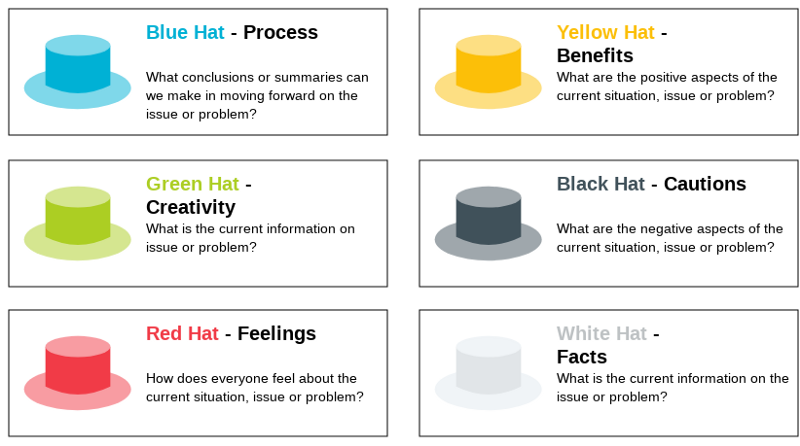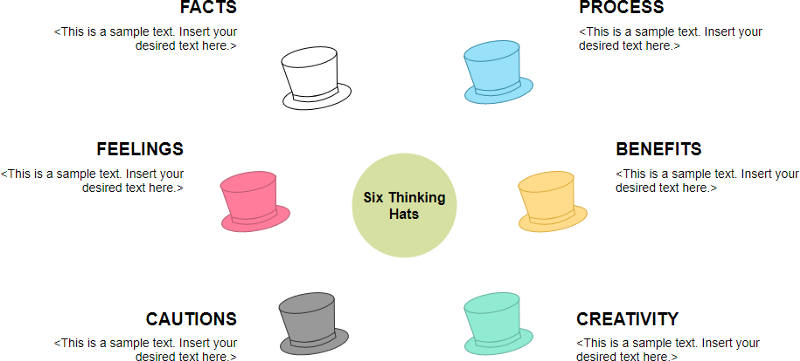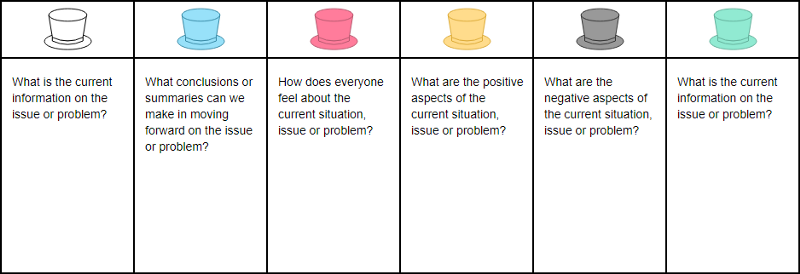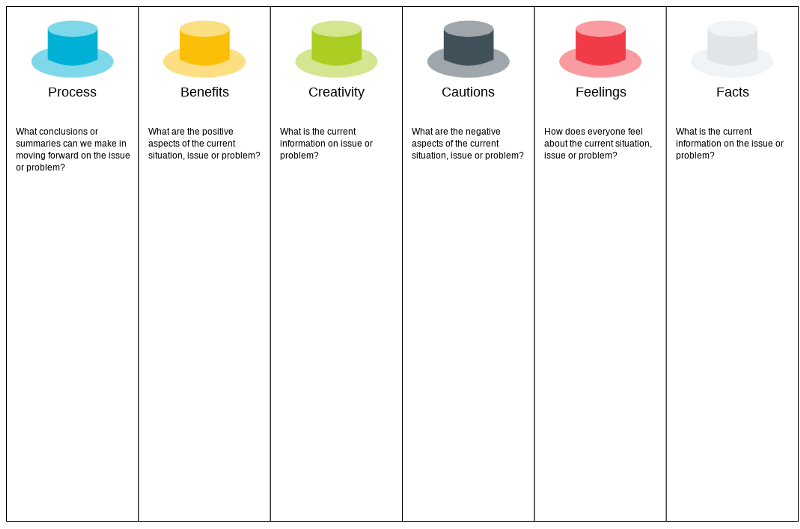During a meeting it is often the case that people use different thinking processes, which can make it difficult for a meaningful discussion to take place. For example, successful people think from a very rational, positive viewpoint. Similarly, pessimists may be excessively defensive, and more emotional people may fail to look at decisions calmly and rationally.
The six thinking hats technique, proposed Edward de Bono in 1999, encourages a group to approach the issue at hand from a number of different perspectives. This forces the team to move outside their habitual thinking style, and helps them to get a more rounded view of a situation. It is an important and powerful technique to debate an issue, solve a problem or to arrive at an important decision.

How to Perform Six Thinking Hat Process?
In six thinking hats, everyone thinks about the same issues at the same time, by putting on six different metaphorical hats. Each hat has a different color, and represents a particular type of thought process.
In meetings it has the benefit of blocking the confrontations that happen when people with different thinking styles discuss the same problem. Each ‘Thinking Hat’ is a different style of thinking. These are explained below:
Six Thinking Hats has been specifically designed so that everyone thinks in parallel using only one hat at a time. The process works best with a time limit (5 minutes maximum) for each hat. This encourages the group to ‘try on other hats’ and specifically helps people who may have very entrenched views to consider the idea from different perspectives.
White Hat — Facts and Information
This covers facts, figures, information needs, and gaps. It looks at what is known and what information could be missing. The association is with paper, on which ‘facts’ are recorded.
Red Hat — Feeling and Intuition
This covers intuition, feelings, and emotions. It focuses on what people feel about the issue under discussion. Importantly, there’s no need to rationalize or explain.
Black Hat — Caution and Problems
This is the hat of judgment and caution. It is the most valuable hat. The focus here is on problems, risks, and challenges that this idea might pose.
Yellow Hat — Benefits and Advantages
This is the logical positive — why something will work and why it will offer benefits. It can be used in looking forward to the results of some proposed action, but can also be used to find something of value in what has already happened.
Blue Hat — Managing Thinking
This is the overview or process control hat. Could you summaries the findings so far? What needs to happen next?
Green Hat — Creativity and Solution
This is the hat of creativity, alternatives, proposals, what is interesting, provocations and changes. This hat is often used in a brainstorm to generate ideas.
Six Thinking Hats Template — Concept Diagram Style

Another Six Thinking Hats Template

Six Thinking Hats Model Template

This post is also available in Deutsch, Español, فارسی, Français, Bahasa Indonesia, 日本語, Polski, Portuguese, Ру́сский, Việt Nam, 简体中文 and 繁體中文.













